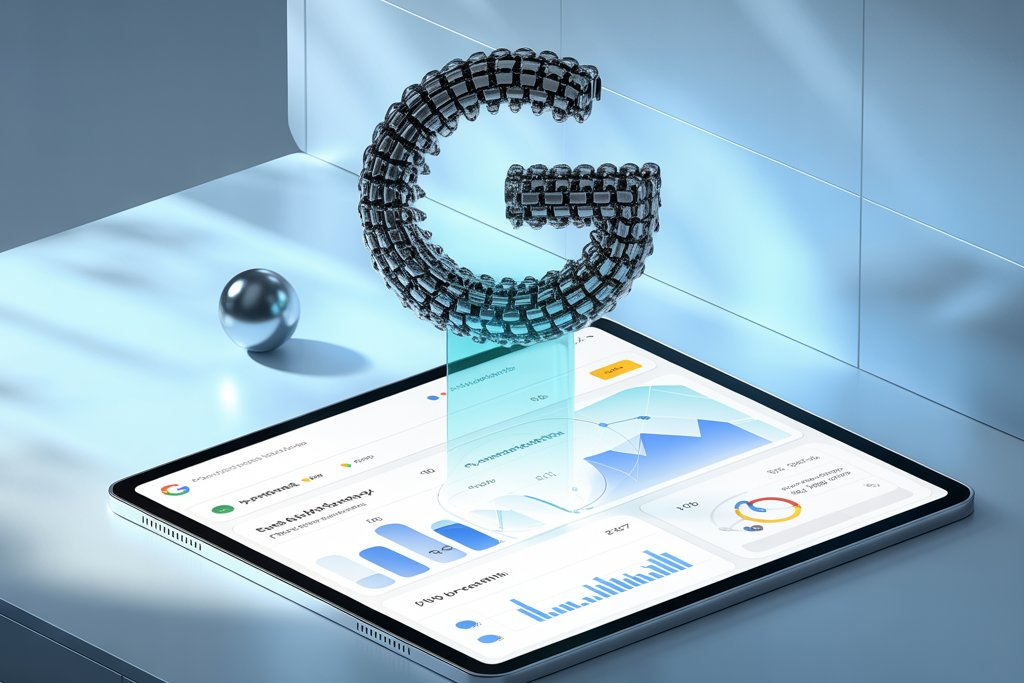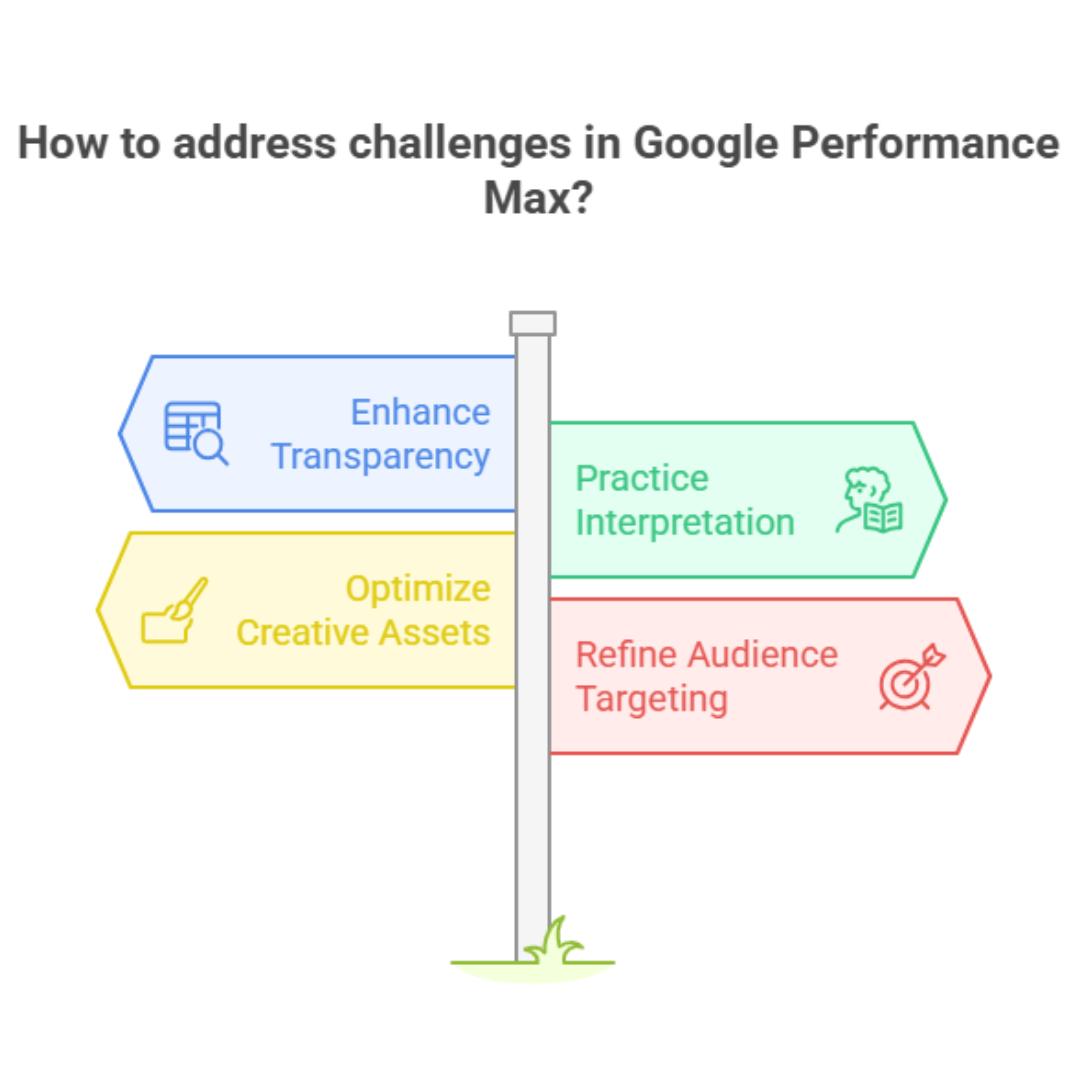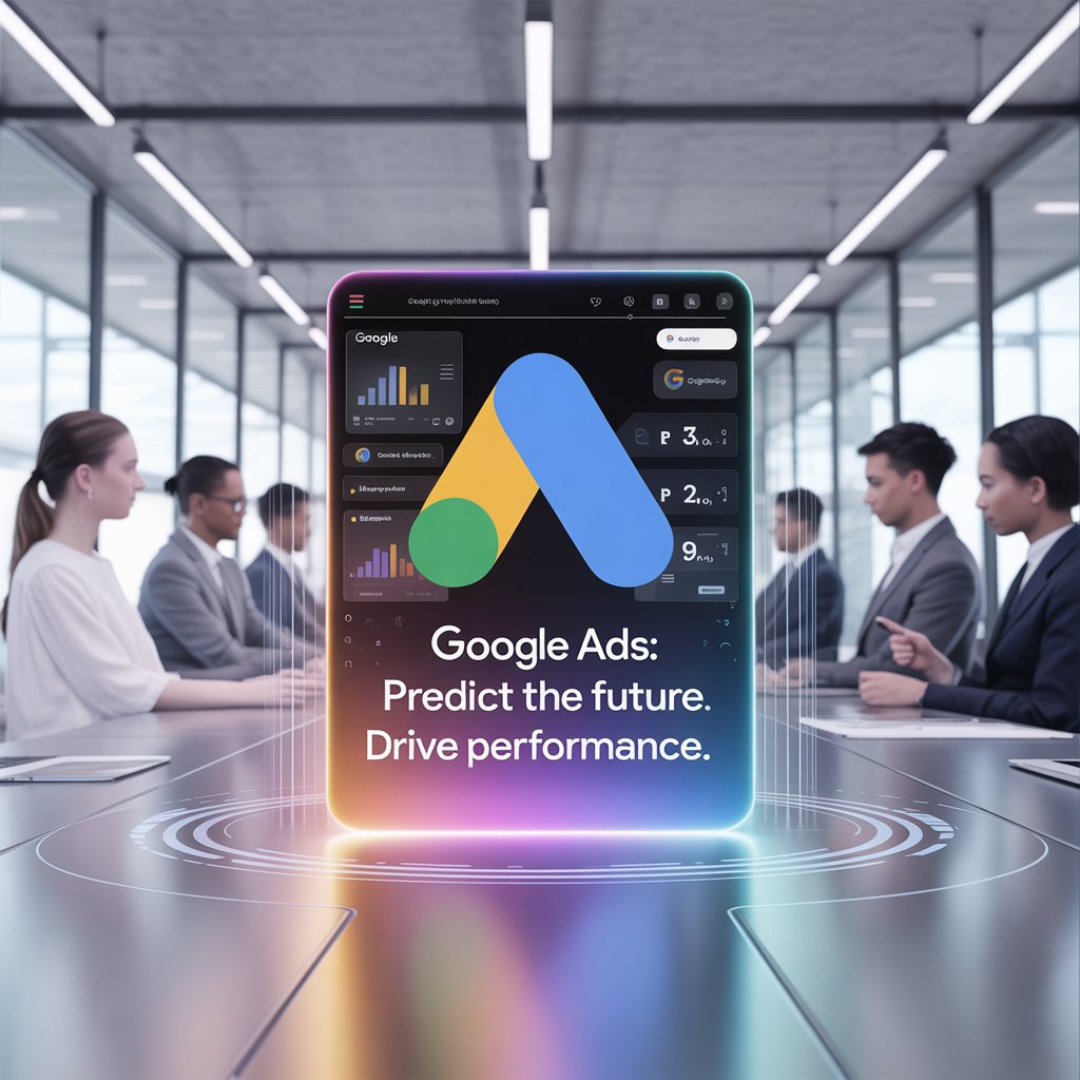What Is Google Performance Max & How It Works Explained

In the ever-evolving world of online advertising, Google Performance Max stands out as a game-changer in 2025. At its core, Performance Max (PMax) is a fully automated campaign type by Google that allows advertisers to access all of Google Ads inventory—across YouTube, Display, Search, Discover, Gmail, and Maps—from a single campaign.
But what truly sets it apart is its AI-powered optimization, which makes media buying smarter, faster, and more performance-driven than ever before.
Gone are the days when marketers had to juggle multiple campaign types and manually adjust bids. With the rise of automation, especially after Google’s Smart Shopping and Local campaigns were upgraded into Performance Max by 2023, advertisers are now witnessing up to 18% more conversions at the same cost per action (CPA), according to Google’s internal data.
So why is Google Performance Max so critical in 2025? Because it aligns perfectly with the future of digital advertising—data-driven, user-intent focused, and ROI-optimized. For digital marketers, it’s not just about placing ads anymore. It’s about understanding how AI can elevate campaign performance and streamline strategy.
At Digital Marketing Marvel, we believe that mastering tools like Google Performance Max is essential for staying ahead in the competitive ad space. Whether you’re managing e-commerce campaigns or driving leads for a service-based business, tapping into Performance Max’s full potential can unlock serious growth.
Read More : Top 4 Tips to Win Zero-Click Searches in Google
What Is Google Performance Max?
Google Performance Max is Google’s most advanced and fully automated campaign type, designed to simplify ad management while maximizing performance.
It gives advertisers the power to run a single campaign across all major Google networks—including Search, Display, YouTube, Gmail, Discover, and even Google Maps. Instead of creating separate campaigns, you can now manage everything under one unified system.
At the heart of Google Performance Max lies powerful machine learning. It analyzes your audience signals, creative assets, and conversion goals to deliver real-time ad placements to the most relevant users.
Whether someone is searching on Google, watching a YouTube video, or browsing through Discover, PMax ensures your ads appear when and where they matter most.
What makes it even more impressive is its automation engine. It handles bidding, targeting, ad creation, and placement based on your defined goals like leads, sales, or website traffic.
According to Google, advertisers using Performance Max have reported up to 13% higher conversion value at a similar CPA compared to standard campaigns.
At Digital Marketing Marvel, we’ve seen firsthand how Google Performance Max can transform campaign efficiency—especially for brands juggling multiple ad formats or targeting audiences across different stages of the funnel. It’s not just automation for the sake of ease—it’s strategic, data-driven automation that delivers measurable results.
Read More : 6 Smart Ways to Reduce Google Ads CPC & Maximize Budget
How Google Performance Max Campaigns Work: Step-by-Step Explained

Understanding how Google Performance Max campaigns function can help you unlock their full potential. Here’s a simplified, step-by-step breakdown of how it works—perfect for marketers who want clarity before diving in.
- Campaign Setup: Assets, Goals & Audience Signals
You start by defining your conversion goals—like purchases, sign-ups, or calls. Then, upload creative assets (headlines, descriptions, images, videos, logos) and set up audience signals. Audience signals guide the machine learning model by telling it who your ideal customers are, based on demographics, search behavior, or first-party data. - AI-Powered Ad Placements
Once your campaign goes live, Google Performance Max uses AI to analyze thousands of real-time signals: location, device, time of day, user intent, and more. Based on this data, it automatically places your ads across Search, Display, YouTube, Gmail, Discover, and Maps—without needing manual intervention. - Smart Bidding & Budgeting
Budgeting in Performance Max is goal-driven. You can choose from bidding strategies like Maximize Conversions or Maximize Conversion Value. The system then adjusts your bids dynamically based on real-time intent signals, which, according to Google, leads to up to 18% more conversions compared to other automated campaigns. - Dynamic Creative Combinations
Here’s where it gets smart: Google Performance Max automatically combines your assets into hundreds of ad variations. It tests and learns which creatives perform best with which audience segments, ensuring each user sees the most relevant ad for them. No more A/B testing on your own—the algorithm handles it at scale.
At Digital Marketing Marvel, we often compare this to hiring a super-intelligent media buyer that works 24/7, optimizing every impression and click for the best outcome. If used strategically, Google Performance Max can become your most efficient advertising tool in 2025.
Read More : Google March Core Update 2025 Rolling Out: Key Changes & Impact
Core Benefits of Using Google Performance Max
Google Performance Max isn’t just another campaign type—it’s a smarter, more holistic way to run ads across Google’s ecosystem. Let’s break down the core benefits that make it a go-to strategy for marketers in 2025.
- One Campaign, All Google Channels
With Google Performance Max, you get access to all of Google’s inventory—Search, Display, YouTube, Discover, Gmail, and Maps—in one unified campaign. This means broader reach without having to manage six separate campaigns. It’s ideal for brands looking to scale quickly and efficiently. - Smarter Conversion Tracking & Goal-Based Bidding
Performance Max aligns with your specific business goals—be it leads, sales, or in-store visits. Google’s AI adjusts bids in real-time based on your chosen objective, improving efficiency. In fact, Google reports that advertisers using goal-based bidding with PMax see an average 12% lift in conversion value. - Less Manual Work, More Strategic Thinking
Gone are the days of adjusting bids, testing creatives manually, and monitoring performance ad-by-ad. Google Performance Max automates most of the heavy lifting, saving marketers hours each week. That time can now be spent on high-level strategy and creative planning. - Better Reporting and Insights
You get detailed insights into top-performing audience segments and creative combinations. This data helps refine future campaigns. For example, if short-form videos outperform static images, Performance Max will automatically prioritize them—and tell you why. - Performance-Driven and ROI-Focused
At Digital Marketing Marvel, we’ve seen how Google Performance Max helps our clients maintain a laser focus on return on investment. The platform optimizes for results, not just impressions—ensuring every rupee spent works harder for your business.
Read More : Best Digital Marketing and Advertising Companies in Dwarka
Limitations & Challenges of Google Performance Max

While Google Performance Max offers powerful automation and broad reach, it’s not without its drawbacks. Like any advanced tool, it has certain limitations marketers should be aware of—especially if you’re used to hands-on control.
- Limited Transparency & Control
Unlike traditional Search or Display campaigns, Google Performance Max doesn’t offer granular control over keyword targeting or placement. You can’t see exactly which search terms triggered your ads, making it harder to pinpoint what’s working and what’s wasting budget. For marketers who value visibility, this can feel like flying blind. - Interpreting Insights Takes Practice
PMax does offer performance reports, but they’re often high-level. There’s a learning curve when it comes to interpreting asset group performance, audience signals, and conversion paths. At Digital Marketing Marvel, we help clients decode these insights and make informed decisions, but for beginners, this can be overwhelming. - Creative Assets Matter—A Lot
Because Google Performance Max dynamically generates ad combinations, the quality of your images, videos, and copy has a direct impact on results. Poor creatives can tank your campaign, even if your strategy is sound. That’s why investing in strong visual and written content isn’t optional—it’s essential. - Audience Targeting Isn’t Perfect
While PMax uses audience signals to guide targeting, you don’t get the same level of control as manual campaigns. This can result in mismatched impressions, especially in niche markets. Some advertisers report wasted ad spend due to irrelevant placements, though the system usually improves with time and data.
Despite these limitations, Google Performance Max remains a powerful tool—especially when combined with strategic oversight and creative excellence. At Digital Marketing Marvel, we believe the key lies in understanding both the strengths and the shortcomings of PMax to get the best of both worlds.
Read More : What is a Good Cost Per Click (CPC)
When to Use Performance Max Campaigns
Knowing when to use Google Performance Max can be the difference between a good campaign and a great one. It’s not always the right fit—but in the right scenarios, it can significantly outperform traditional campaign types.
- Ideal Use Cases
Google Performance Max works exceptionally well for eCommerce businesses, lead generation, and local businesses with specific goals like store visits or phone calls. For eCommerce, it can dynamically show product listings across platforms. For local service providers—like salons or clinics—it helps reach nearby audiences on Maps, Search, and YouTube. - Where PMax Outperforms Traditional Campaigns
If you’re looking to maximize reach with minimal manual input, PMax shines. For example, in remarketing campaigns or when you have first-party data (like email lists), Performance Max uses that data to intelligently re-engage users across Google channels. According to Google, advertisers using PMax instead of Smart Shopping saw an average increase of 12% in conversion value at the same cost. - Real-World Example
At Digital Marketing Marvel, we ran a Performance Max campaign for a local home interior design business. With limited ad assets and a modest budget, the campaign generated 3x more qualified leads compared to the brand’s older Display and Search campaigns combined—thanks to better visibility on Maps and Discover feeds. - Industries Benefiting in 2025
In 2025, industries such as retail, travel, education, real estate, and healthcare are seeing the biggest gains from Google Performance Max. The ability to quickly test creatives and reach intent-based audiences makes it a powerful tool for both B2C and B2B businesses.
Whether you’re just starting or scaling up, Google Performance Max can be your ally in reaching wider audiences with higher precision—especially when supported by smart strategy and strong creatives. At Digital Marketing Marvel, we help brands unlock this potential every day.
Read More :What is a Good Google Ads Quality Score?
Setting Up Your First Google Performance Max Campaign (With Screenshots)
Launching your first Google Performance Max campaign can feel overwhelming, but once you understand the steps, it becomes a smooth process. Here’s a beginner-friendly walkthrough to help you get started confidently.
💡 Note: While screenshots can’t be included here directly, if you’re reading this on our Digital Marketing Marvel blog, visual step-by-step guides are included below for clarity.
Step 1: Select Your Campaign Goal
Begin in your Google Ads dashboard by clicking “+ New Campaign.” Choose a goal that aligns with your objective—such as Sales, Leads, or Local Store Visits. Your goal will inform how Google’s AI optimizes your campaign.
Step 2: Choose “Performance Max”
Once the goal is selected, Google will prompt you to choose a campaign type. Select “Performance Max” from the list. This is where your full Google inventory access begins—Search, Display, YouTube, Discover, Gmail, and Maps.
Step 3: Add Your Asset Group
Think of asset groups as your ad creative toolkit. You’ll upload:
- Headlines (3–5)
- Descriptions (up to 5)
- Images (landscape, square, and portrait)
- Logo and videos (optional but recommended)
Google Performance Max uses these assets to auto-generate ad combinations tailored to different users and platforms.
Step 4: Provide Audience Signals
Audience signals tell Google who you’d like to reach. Add:
- Custom segments (like people who searched for “affordable laptops”)
- First-party data (email lists, remarketing audiences)
- Interests or demographics
This step helps jumpstart Google’s machine learning for faster optimization.
Step 5: Set Budget and Bidding Strategy
Choose a daily budget and a bidding strategy like Maximize Conversions or Maximize Conversion Value. Google recommends at least ₹1,000/day for meaningful results, but we’ve seen businesses get started with less at Digital Marketing Marvel by using laser-focused targeting.
Bonus Tips from Digital Marketing Marvel:
- Use video assets: Campaigns with video get better performance across YouTube and Discover.
- Don’t skip audience signals: Even though Google will learn over time, audience signals give it a strong head start.
- Monitor the Insights tab: It offers valuable data about search categories, top-performing creatives, and audience segments.
Setting up your first Google Performance Max campaign is more about strategy than complexity. Once done right, it starts delivering results across platforms with minimal manual tweaks.
How to Analyze & Optimize Google Performance Max Campaigns

Running a Google Performance Max campaign is only half the journey—optimization is where the real performance gains happen. Here’s how to analyze and improve your campaigns effectively using the tools Google provides.
1. Dive into the “Insights” Tab
The Insights tab is your command center for understanding how Google Performance Max is performing. Here you’ll find:
- Search categories your ads are triggering for
- Top-performing audience segments
- Engagement trends across different placements
At Digital Marketing Marvel, we recommend checking this tab weekly to identify what’s working and where you can double down.
2. Track the Right Metrics
Instead of just impressions and clicks, focus on high-impact KPIs:
- Conversions—total goal completions like sales or leads
- ROAS (Return on Ad Spend)—Key for eCommerce campaigns
- Cost Per Conversion (CPC)—Helps identify efficiency
- Impression Share & Click-Through Rate (CTR)—To measure visibility and engagement
Google’s own benchmarks suggest PMax campaigns can drive up to 18% more conversions with a better cost-per-acquisition compared to standard search campaigns.
3. Use A/B Testing Strategies
Although Google Performance Max doesn’t support traditional A/B testing within the same campaign, you can still compare
- Different asset groups targeting separate audience signals
- Performance between campaigns with vs. without video
- Changes in performance before and after a bidding strategy switch
At Digital Marketing Marvel, we’ve seen significant uplift in ROAS just by testing different messaging angles in separate asset groups.
4. Refine Creative & Audience Inputs
Check the asset report to see how your headlines, images, and videos are rated—low, Good, or best. Replace low-performing assets regularly. Also, revisit audience signals. Are you feeding Google the right intent data? Are your customer lists up-to-date?
Remember, Google Performance Max is only as smart as the inputs you give it. High-quality creatives and strong audience signals equal higher ROI.
Performance Max vs Other Google Campaign Types
As powerful as Google Performance Max is, it’s important to understand how it compares to other Google Ads campaign types—and when it may or may not be the right fit. Let’s break it down clearly.
1. Performance Max vs Search Campaigns
Search campaigns give advertisers full control over keywords, ad copy, and bidding strategies. You know exactly which terms are triggering your ads and where the traffic is coming from.
Google Performance Max, on the other hand, is more of a black box. It automates targeting and placements, often sacrificing transparency for scale and efficiency. If precise keyword control or branded search targeting is essential, traditional Search may still be your best bet.
Digital Marketing Marvel tip: Use Search for branded and competitor campaigns, while letting Performance Max handle discovery and high-intent users across other networks.
2. PMax vs Smart Shopping (Now Merged)
Smart Shopping was designed for eCommerce brands and focused heavily on Google Shopping and remarketing. It’s now been completely merged into Google Performance Max, offering a more advanced version with access to additional channels like YouTube and Discover.
PMax also uses enhanced audience signals, and allows for more creative flexibility through asset groups. In Google’s own internal tests, eCommerce advertisers migrating from Smart Shopping to PMax saw an average 12% boost in conversion value.
3. When Not to Use Performance Max
Avoid using Google Performance Max when:
- You want granular control over keywords or placements
- You’re running short-term promotions or flash sales with specific targeting
- Your creative assets (images, videos, headlines) aren’t ready—since PMax relies heavily on quality input
In such cases, manual Search, Display, or YouTube campaigns may deliver better short-term precision.
4. Hybrid Strategies: The Smart Middle Ground
Many brands succeed using a hybrid strategy. For example:
- Performance Max handles broad targeting and discovery
- Search Campaigns capture high-intent and branded searches
- YouTube or Display are used for storytelling and awareness
At Digital Marketing Marvel, this layered approach has helped our clients maintain performance while improving visibility across the customer journey.
In short, Google Performance Max is not a one-size-fits-all solution—but when paired with the right strategy, it can be a powerhouse in your ad toolkit.
Read More : Top 8 Ways Marketers Use AI to Generate Quality Leads
Expert Tips & Best Practices for Google Performance Max in 2025
As Google Performance Max becomes the backbone of many advertisers’ strategies, mastering it requires more than just setting up a campaign. Here are expert-backed tips to help you get better results in 2025.
1. Upload High-Quality Creative Assets
Google Performance Max thrives on variety and quality. Include multiple headlines, descriptions, images, and videos in every asset group. Remember: your ads are dynamically created, so low-quality assets can directly impact engagement and conversions. Use sharp visuals, brand-consistent messaging, and mobile-friendly formats.
2. Use Strong Audience Signals
While PMax can auto-target, giving it clear audience signals (like customer lists, search behavior, or custom segments) helps the machine learning model ramp up faster. At Digital Marketing Marvel, we often layer first-party data with interest-based targeting for faster and more accurate performance.
3. Monitor Weekly for Asset Fatigue
Check the Insights tab weekly. If your asset ratings show a dip or “Low” performance labels, refresh creatives. Ad fatigue can silently reduce your ROI—especially if you’re running evergreen campaigns.
4. Give the Algorithm Time to Learn
One common mistake advertisers make is editing campaigns too early. Let your Google Performance Max campaign run for at least 2–3 weeks before making major changes. Machine learning needs time to understand your audience and optimize delivery.
5. Use Seasonal Adjustments & Budget Pacing
Take advantage of Google’s seasonality adjustments—especially for peak sale periods. Also, plan your budget pacing so you don’t overspend early or underspend during high-opportunity weeks.
At Digital Marketing Marvel, we treat Google Performance Max like a performance partner—it needs the right input, consistent monitoring, and strategic nudges to perform at its best. Follow these practices, and you’ll be well-positioned to maximize results in 2025.
Read More : 11 Expert Tips to Boost Your Content Performance
Future of Google Ads & Performance Max in 2025 and Beyond

As we look ahead, one thing is clear—Google Performance Max isn’t just a campaign type; it’s a glimpse into the future of advertising. In 2025 and beyond, AI-driven automation, privacy-first strategies, and cross-channel intelligence will become standard in the digital marketing world.
AI & Automation Are Here to Stay
AI isn’t a buzzword anymore—it’s the backbone of Google Ads. With Google Performance Max, automation takes center stage, handling everything from bidding to placements and creative testing. As machine learning becomes more sophisticated, we can expect even more predictive targeting and personalization at scale.
The Privacy-First Shift
With the phasing out of third-party cookies and rising user concerns over data, Google Performance Max is evolving to work within a privacy-first framework. It’s built to use first-party data, contextual signals, and aggregated insights—helping advertisers remain compliant without sacrificing performance.
What’s Next in Google’s Roadmap?
According to Google’s recent updates, future enhancements to PMax may include:
- Improved transparency and reporting
- More creative testing controls
- Better audience segmentation and exclusions
- Integrated first-party data tools for more powerful remarketing
At Digital Marketing Marvel, we believe marketers should embrace these changes. Instead of fearing loss of control, think of PMax as an intelligent partner—automating the repetitive work so you can focus on strategy, storytelling, and customer experience.
Google Performance Max is shaping the way businesses connect with users across multiple touchpoints. As automation, AI, and privacy reshape the ad landscape, marketers who adapt early will lead the charge in the new era of performance marketing.
Read More : How to Make Unique Content in Today’s AI World
Conclusion
Google Performance Max is one of the most powerful tools in a digital marketer’s arsenal today. It combines machine learning, multi-channel reach, and goal-driven automation into a single campaign type that works across Search, Display, YouTube, Gmail, Discover, and Maps.
If you’re looking for efficiency, scale, and performance, Google Performance Max delivers—especially for businesses in eCommerce, lead generation, and local services.
With benefits like broader reach, smart bidding, and creative automation, it can significantly reduce manual effort and boost ROI. However, it does come with limitations such as reduced transparency and less granular control over targeting and placements.
At Digital Marketing Marvel, we recommend testing Google Performance Max in 2025 as part of a hybrid strategy. Start small, monitor closely, and let machine learning do what it’s built to do—optimize.
👉 Ready to scale your results with automation? Start your first Google Performance Max campaign today, or get in touch with our experts at Digital Marketing Marvel for personalized guidance.
FAQs
Q1. Is Performance Max better than Smart Shopping?
Yes, Google Performance Max has replaced Smart Shopping and Local campaigns. It offers broader reach by running ads across all Google channels—Search, Display, YouTube, Gmail, and Maps—while using advanced machine learning to optimize conversions. It provides more insights, creative flexibility, and automation than Smart Shopping.
Q2. Can I control where my ads appear?
While Performance Max relies heavily on automation, advertisers do have control over inputs like audience signals, location targeting, budgets, and creative assets. However, specific placement control (e.g., blocking certain websites or channels) is limited. Google’s AI determines the best placements based on performance data.
Q3. How long does it take to see results?
Typically, you can expect to see initial performance results within 2 to 3 weeks. This period allows Google’s machine learning system to go through a learning phase, during which it tests different combinations of assets, audiences, and placements to optimize your campaign.
Q4. Is it suitable for small businesses?
Absolutely. Performance Max is designed to be beginner-friendly and works well for small businesses with limited resources. Its automation and all-in-one campaign structure help small advertisers achieve better ROI without needing deep technical expertise. Just make sure to use high-quality creatives and clear conversion tracking.


